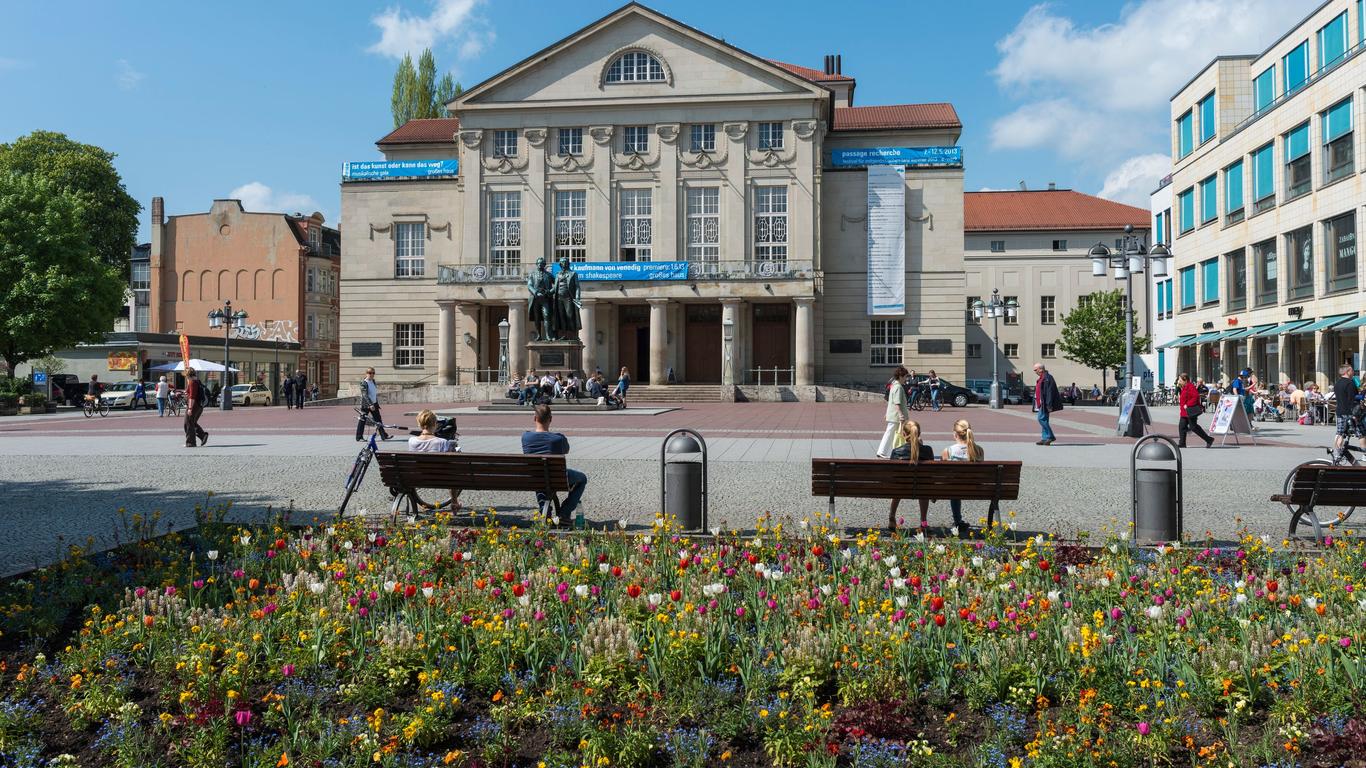Weimar is in south-eastern Germany. The name is famously connected to the Weimar Republic which was a period in German state history from 1919 to 1933 where a German National Assembly had gathered after the Federal elections in January 1919.
Weimar is one of Germany’s most historic sites for cultural reasons, being home to Friedrich Schiller and Johann Wolfgang von Goethe, their two most famous writers and poets. In deference to these eminent men, a bronze double-figure statue was mounted on a large stone pedestal in front of the Court Theatre where Goethe had directed many premieres and performances of Schiller’s plays. The Bauhaus Museum is another of Weimar’s attractions. Founded in 1919 by modernist architect Walter Gropius, it houses over 200 exhibits that offer insights into the remarkable building designed by avant-garde artists such as Lyonel Feininger and Johannes Itten. Situated at the northend of the town’s park along the Ilm River is the gorgeous Baroque-style Schloss Weimar which is now called Stadtschloss to differentiate it from other nearby palaces. Nearby is the Duchess Anna Amalia Library, home to a major collection of historical documents library that includes books such as a 16th-century Bible connected to Martin Luther, medieval manuscripts, and musical scripts.
Leipzig Halle Airport is the closest airport to Weimar. Shuttle buses, taxis, trains and car hire companies can all be found within the Airport Arrivals vicinity. Weimar is connected to Autobahn A4 and is about 2.5 hours away. The best way to get around town is by walking, with taxis available and most places of interest, restaurants and hotels are all less than a 15-minute walk of each other.
The idea of the Weimar Republic had been for the nation to be a democratic federal republic, governed by a parliament and a president. The town was chosen for its tranquil presence compared to the past upheavals experienced by Berlin.





